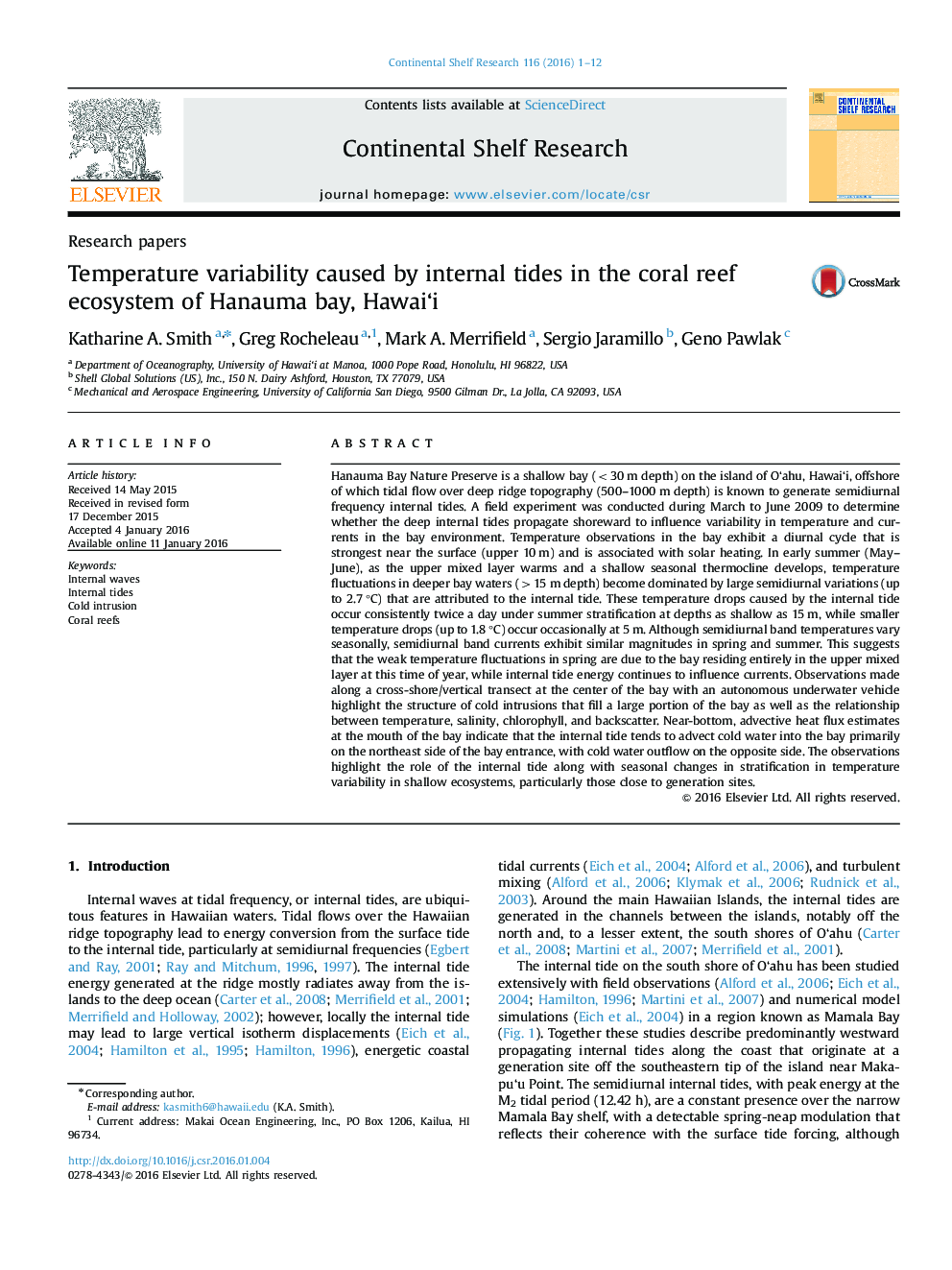| کد مقاله | کد نشریه | سال انتشار | مقاله انگلیسی | نسخه تمام متن |
|---|---|---|---|---|
| 4531605 | 1626097 | 2016 | 12 صفحه PDF | دانلود رایگان |

• We observed upwelling due to the semidiurnal internal tide in shallow Hanauma Bay.
• The internal tide-related cold intrusions affect waters as shallow as 5 m.
• The intrusions are notably large and regular during summer months in the lower bay.
• Higher salinity and chlorophyll concentration are associated with the cold intrusions.
• The internal tide may have important implications for the bay’s coral reef ecosystem.
Hanauma Bay Nature Preserve is a shallow bay (<30 m depth) on the island of O‘ahu, Hawai‘i, offshore of which tidal flow over deep ridge topography (500–1000 m depth) is known to generate semidiurnal frequency internal tides. A field experiment was conducted during March to June 2009 to determine whether the deep internal tides propagate shoreward to influence variability in temperature and currents in the bay environment. Temperature observations in the bay exhibit a diurnal cycle that is strongest near the surface (upper 10 m) and is associated with solar heating. In early summer (May–June), as the upper mixed layer warms and a shallow seasonal thermocline develops, temperature fluctuations in deeper bay waters (>15 m depth) become dominated by large semidiurnal variations (up to 2.7 °C) that are attributed to the internal tide. These temperature drops caused by the internal tide occur consistently twice a day under summer stratification at depths as shallow as 15 m, while smaller temperature drops (up to 1.8 °C) occur occasionally at 5 m. Although semidiurnal band temperatures vary seasonally, semidiurnal band currents exhibit similar magnitudes in spring and summer. This suggests that the weak temperature fluctuations in spring are due to the bay residing entirely in the upper mixed layer at this time of year, while internal tide energy continues to influence currents. Observations made along a cross-shore/vertical transect at the center of the bay with an autonomous underwater vehicle highlight the structure of cold intrusions that fill a large portion of the bay as well as the relationship between temperature, salinity, chlorophyll, and backscatter. Near-bottom, advective heat flux estimates at the mouth of the bay indicate that the internal tide tends to advect cold water into the bay primarily on the northeast side of the bay entrance, with cold water outflow on the opposite side. The observations highlight the role of the internal tide along with seasonal changes in stratification in temperature variability in shallow ecosystems, particularly those close to generation sites.
Graphical AbstractFigure optionsDownload as PowerPoint slide
Journal: Continental Shelf Research - Volume 116, 15 March 2016, Pages 1–12